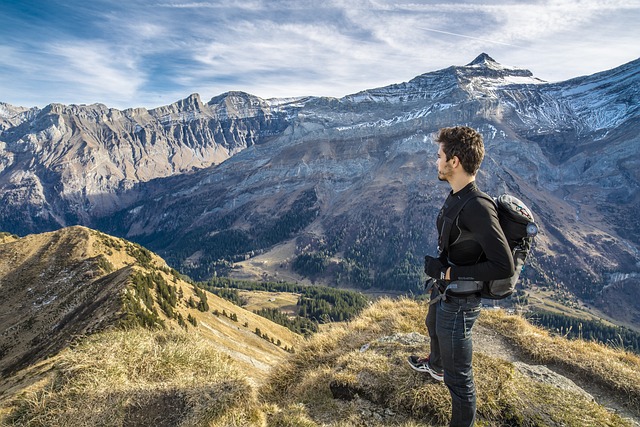Hiking is a popular outdoor activity that provides numerous health benefits. In addition to improving cardiovascular health and reducing stress, hiking is an excellent way to work for various muscle groups. But what muscles does hiking work, exactly?
Hiking is a full-body workout that engages several major muscle groups. The primary muscles worked during hiking include the legs (quadriceps, hamstrings, glutes, and calves), hips (hip flexors and abductors), core (abs and back muscles), and upper body (shoulders, arms, and upper back). Hiking provides a total-body workout that can improve strength, endurance, and coordination.
In this post, I’ll explore the major muscle groups involved in hiking and explain how regular hiking can contribute to overall muscle development and toning. I’ll also provide tips for maximizing the muscle benefits of hiking and incorporating additional exercises and activities into your hiking routine.
So, grab your hiking boots, and let’s get started!
Muscles worked during hiking
Hiking is a full-body workout that engages several major muscle groups. Here are the primary muscles worked during hiking:
- Legs: Hiking primarily works the muscles in your legs, including the quadriceps, hamstrings, glutes, and calves. These muscles are responsible for supporting your body weight and propelling you up hills and inclines.
- Hips: The muscles in your hips, including the hip flexors and abductors, are also heavily engaged during hiking. These muscles help stabilize your pelvis and maintain proper posture while walking on uneven terrain.
- Core: Hiking requires a lot of core stabilization to maintain balance and control your movements. The muscles in your core, including your abs and back muscles, work together to keep your body stable while walking on rocks, roots, and other obstacles.
- Upper body: While hiking may not seem like an upper-body workout, your arms, shoulders, and back are still involved in the movement. Your arms swing naturally as you walk, engaging the muscles in your shoulders and upper back. Additionally, using trekking poles can help work your biceps, triceps, and forearms.
Hiking engages all of these muscle groups and provides a total-body workout that can help improve your overall strength and endurance.
Benefits of hiking for muscle development
Hiking is a great way to develop and tone your muscles. Here are five of the benefits of hiking for muscle development:
- Low-impact exercise: Unlike high-impact activities like running or jumping, hiking is a low-impact exercise that puts less stress on your joints. This makes it a great option for people who are looking to build muscle but have joint pain or injuries.
- Increased muscle endurance: Hiking involves sustained periods of moderate activity, which can help improve your muscle endurance. Regular hiking can help your muscles work more efficiently over time, allowing you to hike longer distances and tackle more challenging trails.
- Total-body workout: As we mentioned earlier, hiking engages several major muscle groups, providing a total-body workout. By working multiple muscle groups at once hiking can help you maximize your workout efficiency and save time.
- Improves balance and coordination: Hiking on uneven terrain requires balance and coordination, which can help improve your overall muscle control and stability. This can help reduce your risk of falls and injuries both on and off the trail.
- Builds strength in functional movement patterns: Hiking involves a lot of functional movement patterns, such as walking uphill and carrying a backpack. By strengthening these movements, you can improve your overall strength and ability to perform daily activities.
Overall, hiking is a great way to build and tone your muscles while enjoying the great outdoors.
Tips for maximizing the muscle benefits of hiking
If you’re looking to maximize the muscle benefits of hiking, here are six tips to consider:
- Start slow and gradually increase intensity: If you’re new to hiking, start with shorter, less strenuous hikes and gradually work your way up to longer and more challenging trails. This will help prevent injury and allow your muscles to adapt to the new activity.
- Use proper form: Maintaining proper form while hiking can help ensure that you’re engaging the correct muscles and reducing your risk of injury. Make sure to keep your shoulders back, your core engaged, and your feet firmly planted on the ground.
- Incorporate hills and inclines: Walking uphill engages your leg muscles, particularly your quads, and glutes, more than walking on flat ground. Look for hikes with hills or inclines to increase the muscle-building benefits of your hike.
- Add weight: Carrying a backpack or wearing ankle weights can add extra resistance to your hike and increase the muscle-building benefits. However, make sure not to overload your backpack, as this can put unnecessary strain on your back.
- Use trekking poles: Trekking poles can help engage your upper body muscles, particularly your arms, and shoulders, while also providing extra stability on uneven terrain.
- Mix it up: While hiking is a great way to build muscle, it’s important to incorporate other exercises and activities into your routine as well. Consider adding strength training, yoga, or other forms of cardio to your workout regimen to maximize the benefits.
You can make the most of your hiking workouts and achieve optimal muscle development by following these tips.
FAQs
Here are some answers for most of the FAQs (Frequently Asked Questions) related to hiking and muscle development.
Q: How often should I go hiking to see results in muscle development?
A: The frequency of your hikes depends on your fitness level and goals. For beginners, starting with one or two hikes per week is a good place to start. As you get more comfortable and your endurance improves, you can gradually increase the frequency to 3-4 times per week. Consistency is key for seeing results in muscle development.
Q: Do I need to carry a heavy backpack to build muscle while hiking?
A: Carrying a backpack can add resistance to your hike, which can increase the muscle-building benefits. However, it’s important not to overload your backpack as this can put unnecessary strain on your back. A backpack weighing between 10-20% of your body weight is a good guideline to follow.
Q: Can hiking replace traditional strength training workouts?
A: While hiking is a great way to build muscle and improve overall fitness, it shouldn’t replace traditional strength training workouts completely. Strength training is important for targeting specific muscle groups and building muscle mass, whereas hiking provides a total-body workout that engages multiple muscle groups simultaneously.
Q: What should I eat before and after a hike to fuel my muscles?
A: It’s important to fuel your body with the right nutrients before and after a hike to support muscle development and recovery. Before a hike, eat a balanced meal that includes carbohydrates, protein, and healthy fats. After a hike, consume a post-workout snack or meal that includes protein and carbohydrates to help repair and replenish your muscles.
Q: How can I prevent muscle soreness after hiking?
A: Soreness is a common side effect of any workout, including hiking. To prevent or reduce muscle soreness, make sure to stretch before and after your hike, stay hydrated, and incorporate rest days into your routine. Additionally, using a foam roller or getting a massage can help relieve muscle tension and soreness.
Conclusion
In conclusion, hiking is an excellent way to work various muscle groups and achieve overall muscle development and toning. By engaging your legs, hips, core, and upper body, hiking provides a total-body workout that can improve your strength, endurance, and coordination. Whether you’re a beginner or an experienced hiker, incorporating regular hikes into your fitness routine can help you achieve your fitness goals while enjoying the great outdoors.
So, put on your hiking boots, hit the trails, and start reaping the benefits of this incredible activity!




